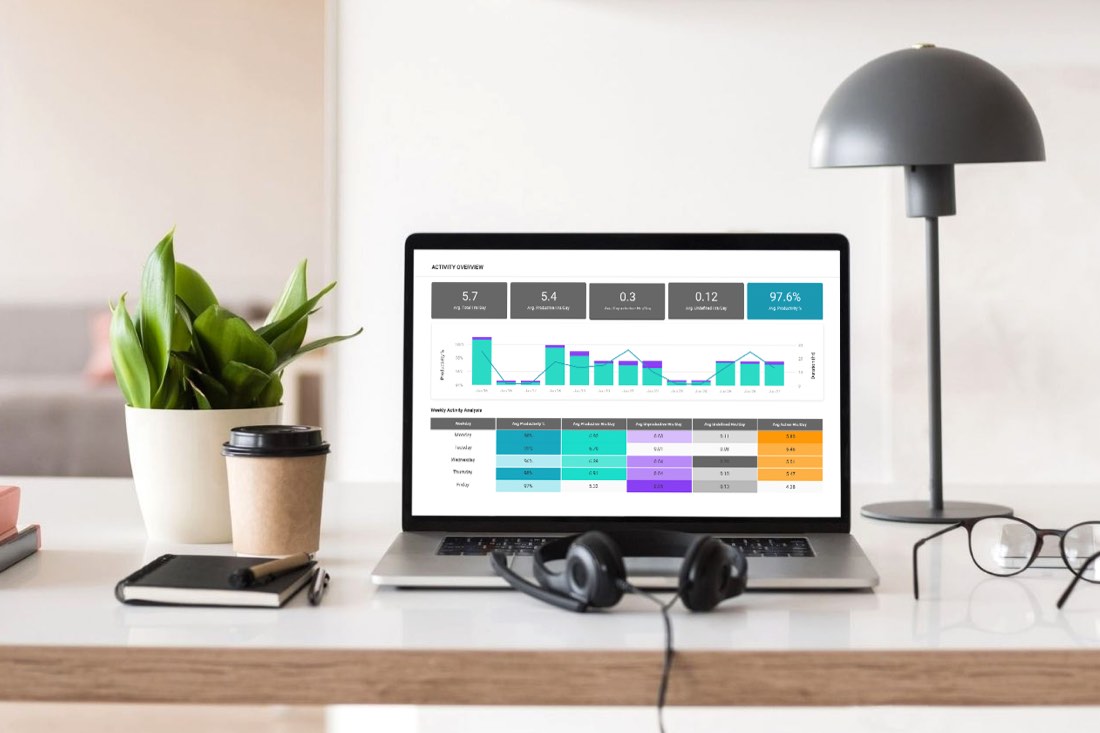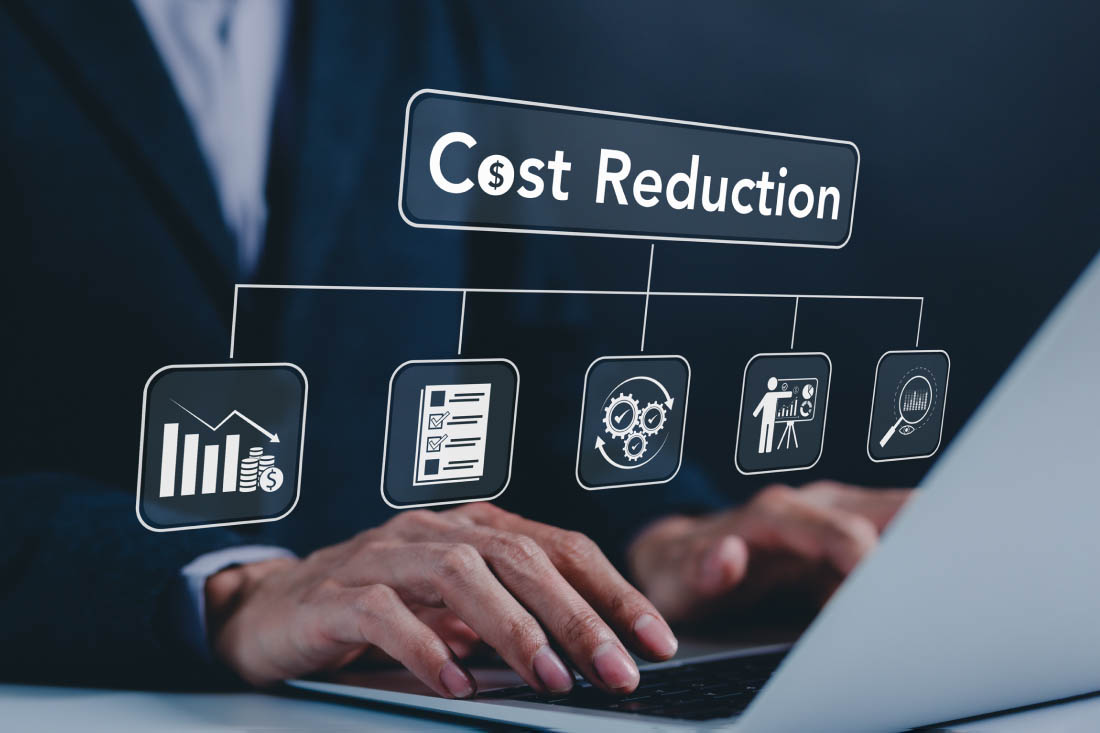Employee monitoring, also referred to as employee surveillance, is a controversial topic that many organizations have considered. It’s especially important as companies question how working from home impacts productivity, and many are wondering if employee monitoring can be used to increase productivity.
Advocates argue that employee monitoring can help increase productivity by keeping employees focused and preventing them from wasting precious work hours. It can also help management trust that their employees are actually working when they’re being paid. On the other hand, those who are against it say it’s an invasion of privacy and can lead to lower employee morale.
Learn more about the benefits and drawbacks of employee monitoring, as well as the legal and ethical issues that come with surveillance measures, and find out if it really increases productivity.
The benefits and drawbacks of employee monitoring
One of the main advantages of employee monitoring is that it can help identify the time spent on tasks. With monitoring tools and tracking software, managers can track employee activity, including the amount of time an employee spends on work-related tasks versus other tasks. As a result, this can help employees become aware of their own work habits and make adjustments accordingly.
On the other hand, monitoring can also lead to negative effects on productivity. Some workers may feel they’re being micromanaged, which can lead to a decline in motivation and engagement. Monitoring can also create an environment of distrust, where employees feel like management is spying on them. This can not only harm their productivity but also lead to a decrease in job satisfaction.
Another potential drawback of employee monitoring is the invasion of privacy. Employees may feel uncomfortable knowing their every move is being tracked and recorded, even if it’s for work-related purposes. This can lead to a sense of unease and anxiety, which can ultimately affect their performance and well-being.
The impact of employee monitoring on employee morale
One of the major concerns of employee monitoring is how it may impact employee morale. Job satisfaction and employee morale are directly linked, and when employees feel like they are being spied on, they may feel disrespected and undervalued. This can lead to feelings of stress and anxiety, which can ultimately harm their health and work performance. In addition, employees may be hesitant to bring up these concerns with management because they fear retaliation, which can create a toxic work environment.
However, it’s important to note that employee monitoring can also have positive effects on employee morale. For example, monitoring can help identify areas where employees may need additional training or support, which can lead to improved job performance and job satisfaction. Monitoring can also help prevent unethical or illegal behavior in the workplace, which can create a safer and more respectful work environment for all employees.
The legal and ethical considerations of employee monitoring
Before implementing any employee monitoring program, it’s important to consider the legal and ethical implications. Employers must inform employees that they’re being monitored and explain the reasons for the surveillance. This is typically done via an employee monitoring policy, which outlines the extent and purpose of the monitoring. It’s also important to make sure that any monitoring techniques used are legal and comply with relevant legislation, such as GDPR and data protection laws.
Additionally, employers have to make sure that the monitoring isn’t excessive or intrusive, and that it doesn’t violate employees’ privacy rights. For example, monitoring employees’ personal emails or social media accounts may be considered an invasion of privacy. Employers should also consider the potential impact of monitoring on employee morale and trust. If employees feel that they are constantly being watched, it may lead to feelings of distrust and resentment towards the employer.
Organizations also need to be clear about how they’re going to use the collected employee data and comply with data protection laws. Data collection and management may be governed by strict rules that can get your company in trouble if they’re not followed.
Different types of employee monitoring techniques
There are several techniques that employers can use to monitor employees, which vary from the highly invasive to the less invasive.
Less invasive techniques include time tracking through project management apps, clocking in or out, or simply keeping track of how long employees take to complete certain tasks. This may also include tracking how many meetings employees participate in compared to time they can spend working on tasks or how much time they spend writing emails.
Some types of less invasive monitoring may include email tracking and network tracking for specific “no-no” keywords or sites to protect the company from legal issues or security attacks. Some organizations may also track employee location when they’re on-site via key badges or code access to help verify where employees are, for instance in lab settings or settings with high security.
Other more invasive types of employee monitoring include keyword stroke logging, phone monitoring, email monitoring for content and video monitoring. Although some employers may find these methods necessary or beneficial, many employees will find them to be a bridge too far when it comes to privacy.
Each technique has its own advantages and drawbacks, such as how hard they are to implement and how invasive they can be. It’s up to the employer to decide which method is best for their organization. It’s important to ensure that employees are aware of the monitoring methods being used, and that they have given their consent (if required) for the surveillance to take place.
The correlation between surveillance, productivity and job satisfaction
When it comes to employee monitoring, it’s important for organizations to remember the true end goal of surveillance: increasing productivity for the company and job satisfaction for employees. Keeping track of your employees’ every move is not the reason for any company to implement a monitoring solution.
In fact, studies have shown that there is a correlation between employee surveillance and job satisfaction. When employees feel their privacy is being invaded, or their employer doesn’t trust them, they are more likely to experience a decline in job satisfaction. This, in turn, can lead to a decrease in productivity and an increase in absenteeism and turnover. To avoid this, employers must find the right balance between monitoring and respecting their employees’ privacy.
But it’s important to note that some level of surveillance can actually increase job satisfaction. For example, if employees feel their safety and security are being prioritized through surveillance measures, they may feel more comfortable and satisfied in their workplace. At the same time, surveillance can help identify and address issues such as harassment or theft, which can improve overall workplace morale.
It’s also important for employers to communicate clearly with their employees about the purpose and extent of any surveillance measures. This can help alleviate any concerns or mistrust that employees may have, and ensure that they understand the reasons behind the monitoring. Ultimately, finding the right balance between surveillance and privacy is crucial for maintaining a positive and productive workplace environment.
How to effectively implement an employee monitoring program in the workplace
If you’re considering implementing an employee monitoring program in your workplace, there are a few things you can do to ensure its effectiveness:
- Make sure that employees are aware of the monitoring program and why you’re implementing it.
- They should fully understand how you’re going to maintain their privacy and what the information you’re getting will be used for. It’s also a good idea to let them know this is a way to improve employee productivity and find out how employees work to make things better for everyone.
- Provide clear guidelines for acceptable and unacceptable behavior, so that employees know what’s expected of them.
- You should explain the consequences so that employees know what will happen if they break the rules, or how they’ll be rewarded for following them.
- Consider using monitoring methods that are minimally invasive and respect employees’ privacy as much as possible.
- “Less is more” may be a good way to think about employee monitoring. Find methods that give you the information you need without stepping over any personal boundaries for your employees, especially if they’re engaging in remote work or working from home.
Balancing privacy concerns with the benefits of monitoring
Employee monitoring is a balancing act between privacy concerns and the benefits it can bring to an organization. While monitoring can help increase productivity and prevent wasting time, it’s important to consider the impact it may have on employee morale and job satisfaction. Finding the right balance between monitoring and privacy concerns is important for any organization that wants to implement an effective employee monitoring program.
There’s also a chance that managers could misuse monitoring technology for personal or criminal reasons. It’s important for companies to establish clear policies and guidelines regarding employee monitoring to ensure that it’s used appropriately and doesn’t violate employees’ rights to privacy.
Using workforce analytics to improve productivity
The secret to employee monitoring is to understand that surveillance isn’t the point. Instead, the best benefit of employee monitoring is the workforce analytics you can glean from it. For instance, knowing how much time employees spend on tasks over time can help you determine if some employees need more training or if you need to shift workloads.
It can also help you determine if your employees are more productive working remotely or from home, or if they get more done in the office. With the right data, you can spot burnout and nip it in the bud. Plus, you can determine the impact new technology has on your employees and their productivity.
ActivTrak offers a number of employee monitoring solutions that help you sort through all of this data to find solutions to productivity issues while also maintaining privacy and employee trust. Our solutions don’t use invasive techniques like keystroke logging or recording video, but are still able to determine what may distract employees and what may help them be productive.
Conclusion
Going back to the original question, “Does employee monitoring increase productivity?” Employee monitoring can help increase productivity in the workplace, but it’s important to consider the potential drawbacks and legal and ethical implications. By finding the right balance between monitoring and privacy concerns and by finding the right technique for their needs, employers can create a positive work environment that benefits both the organization and its employees.
Check out a demo of our products today to see how ActivTrak can help you strike the right balance between employee monitoring and privacy for your organization.





